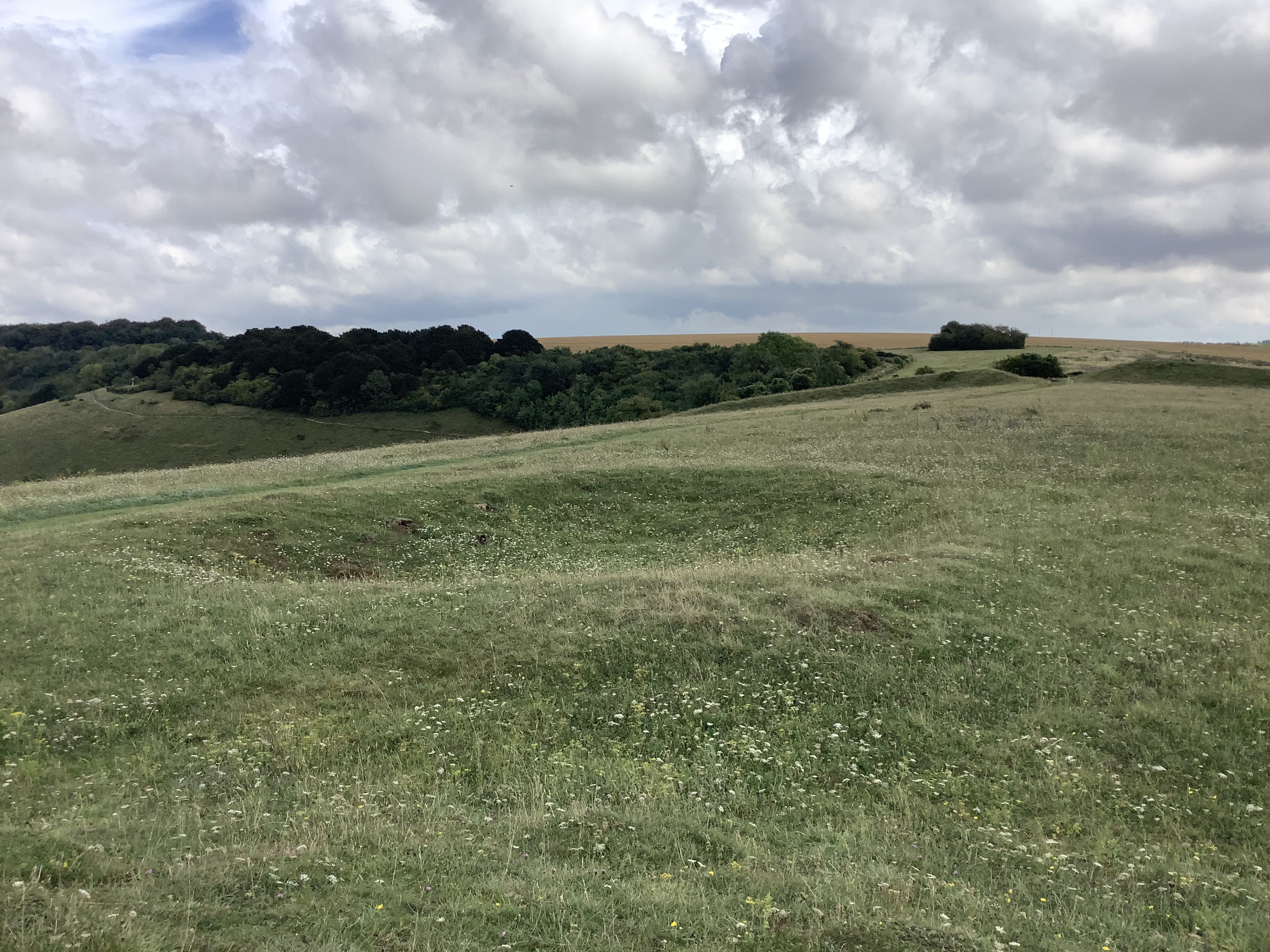Pond Barrow on:
[Wikipedia]
[Google]
[Amazon]
 A pond barrow is a
A pond barrow is a
English Heritage
Bronze Age Britain Types of monuments and memorials Barrows in England
 A pond barrow is a
A pond barrow is a burial mound
Burial, also known as interment or inhumation, is a method of final disposition whereby a dead body is placed into the ground, sometimes with objects. This is usually accomplished by excavating a pit or trench, placing the deceased and objec ...
, circular in shape, well formed, and with an embanked rim made of the earth taken from the depression made in the ground.
In the barrow's centre there is generally a pit or shaft, sometimes containing a burial, sometimes of great depth. The barrows range from 5m to 30m (16.5 – 100 ft) in diameter. They are usually difficult to recognise, as time has rendered them less and less visible.
History of the pond barrow
It is generally agreed that the pond barrows were mainly built during the middle of the second millennium BC, mostly inWiltshire
Wiltshire (; abbreviated to Wilts) is a ceremonial county in South West England. It borders Gloucestershire to the north, Oxfordshire to the north-east, Berkshire to the east, Hampshire to the south-east, Dorset to the south, and Somerset to ...
and Dorset
Dorset ( ; Archaism, archaically: Dorsetshire , ) is a Ceremonial counties of England, ceremonial county in South West England. It is bordered by Somerset to the north-west, Wiltshire to the north and the north-east, Hampshire to the east, t ...
.
They were first defined by Sir Richard Colt Hoare in 1810 in a book regarding the ancient history of south Wiltshire, but they were first excavated by William Stukeley
William Stukeley (7 November 1687 – 3 March 1765) was an English antiquarian, physician and Anglican clergyman. A significant influence on the later development of archaeology, he pioneered the scholarly investigation of the prehistoric ...
earlier. The term, however, was invented by Hoare, although "barrow" refers to a hill and so this is a fairly misleading term.
Uses
The fact that only small amounts of human remains are found in the barrows suggests that they may have been used as ceremonial focuses rather than graves, and that mortuary rituals may have been carried out with them. Other possible uses include wells, for communications with theunderworld
The underworld, also known as the netherworld or hell, is the supernatural world of the dead in various religious traditions and myths, located below the world of the living. Chthonic is the technical adjective for things of the underworld.
...
and for dancing
Dance is an art form, consisting of sequences of body movements with aesthetic and often symbolic value, either improvised or purposefully selected. Dance can be categorized and described by its choreography, by its repertoire of movements or ...
in.
References
{{reflistEnglish Heritage
Bronze Age Britain Types of monuments and memorials Barrows in England